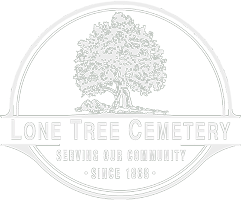Scholars today generally agree that cremation probably began in any real sense during the early Stone Age – around 3000 B.C. – and most likely in Europe and the Near East.
During the late Stone Age, cremation spread across northern Europe, as evidenced by particularly informative finds of decorative pottery urns in western Russia among the Slavic peoples.
With the advent of the Bronze Age – 2500 to 1000 B.C. – cremation moved into the British Isles and into what is now Spain and Portugal. Cemeteries for cremation developed in Hungary and northern Italy, spreading to the north of Europe and even Ireland.
In the Mycenaean Age – circa 1000 B.C. – cremation became integral to the elaborate Grecian burial custom. It became the dominant mode of disposition by the time of Homer in 800 B.C. It was encouraged for health reasons and expedient burial of slain warriors in this battle-ravaged country.
Following this Grecian trend, the early Romans probably embraced cremation sometime around 600 B.C. However, it became so prevalent that the Romans issued an official decree in the mid-5th Century against the cremation of bodies within the city.
By the time of the Roman Empire – 27 B.C. to 395 A.D. – Cremation was widely practiced, with cremated remains stored in elaborate urns, often within columbarium-like buildings.
Although the practice was prevalent among the Romans, cremation was rare with the early Christians, who considered it pagan, and in the Jewish society, where traditional sepulcher entombment was preferred.
However, by 400 A.D., due to Constantine’s Christianization of the Empire, earth burial wholly replaced cremation except for rare instances of plague or war. Earth burial practices were the preferred method for the next 1500 years.
Modern cremation, as we know it, began only a little over a century ago, after years of experimentation to develop a dependable chamber. When Professor Ludovico Brunetti of Italy finally perfected his model and displayed it at the 1873 Vienna Exposition, the cremation movement started almost simultaneously on both sides of the Atlantic.
Queen Victoria’s surgeon, Sir Henry Thompson, in the British Isles, encouraged the cremation movement. Concerned with hazardous health conditions, Sir Henry and his colleagues founded the Cremation Society of England in 1874. The first crematories in Europe were built in 1878 in Woking, England, and Gotha, Germany.
Meanwhile, in North America, although there had been two recorded instances of cremation before 1800, the actual start began in 1876 when Dr. Julius LeMoyne built the first crematory in Washington, Pennsylvania.
In 1884 the second crematory opened in Lancaster, Pennsylvania, and, as was true of many of the early crematories, it was owned and operated by a cremation society. Other forces behind early crematory openings were Protestant clergy who desired to reform burial practices and the medical profession concerned with health conditions around early cemeteries.
Crematories soon appeared in Buffalo, New York, Pittsburgh, Cincinnati, Detroit, and Los Angeles. By 1900, there were already 20 crematories in operation. By the time Dr. Hugo Erichsen founded the Cremation Association of America in 1913, there were 52 crematories in North America, and over 10,000 cremations took place that year.
In 1975, the association changed its name to the Cremation Association of North America to indicate the membership composition of the United States and Canada. At that time, there were over 425 crematories and nearly 150,000 cremations.
In 1999, there were 1,468 crematories and 595,617 cremations, a percentage of 25.39% of all deaths in the United States. By 2019, there were over 3,000 crematories and over 1,500,000 cremations, and cremation was the preferred process for 54.6% of deaths in the United States.

